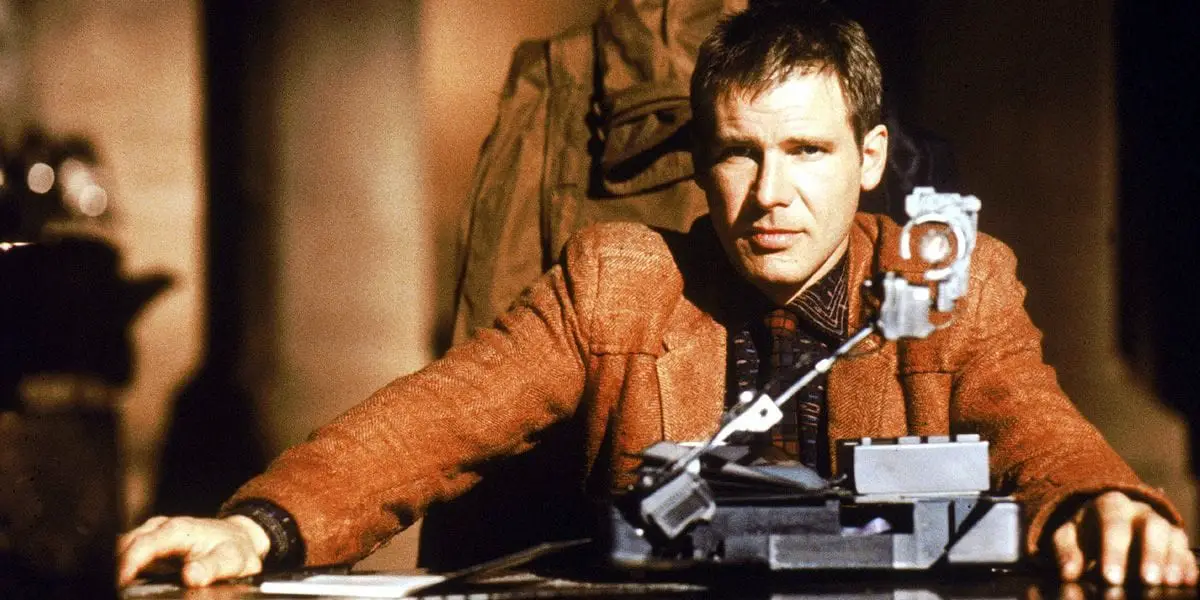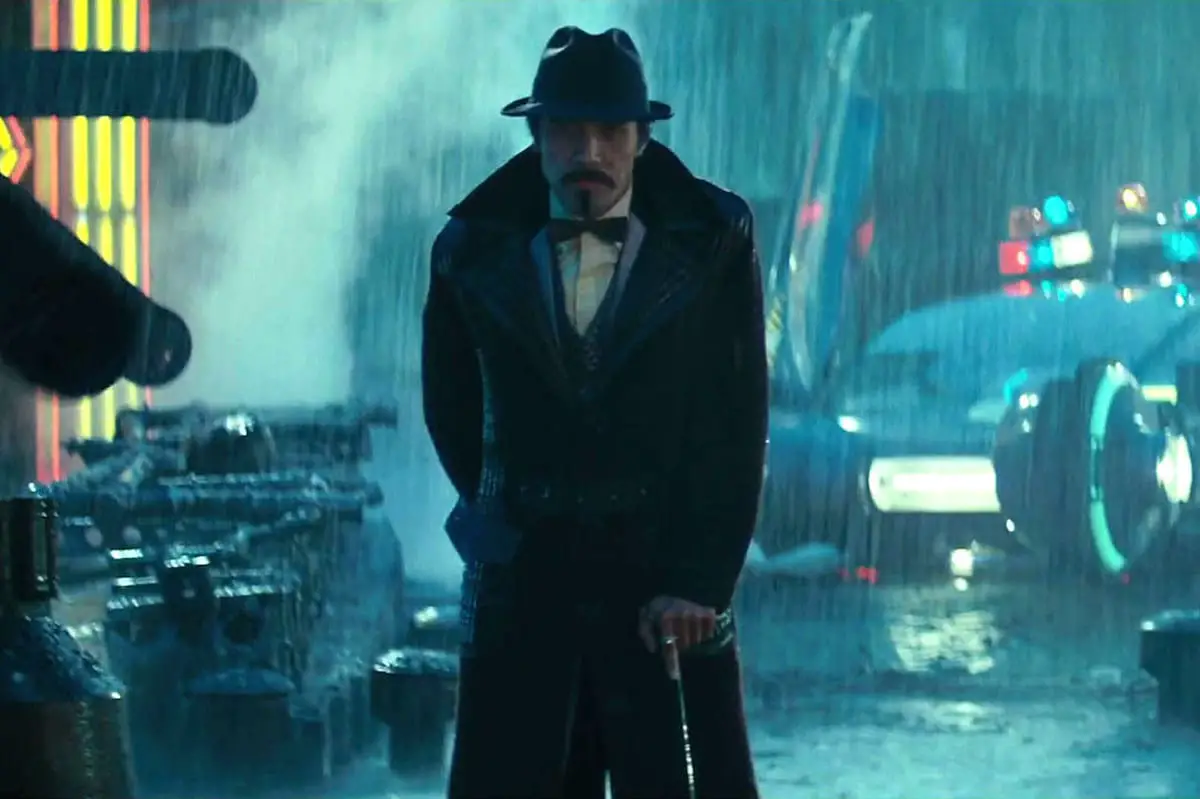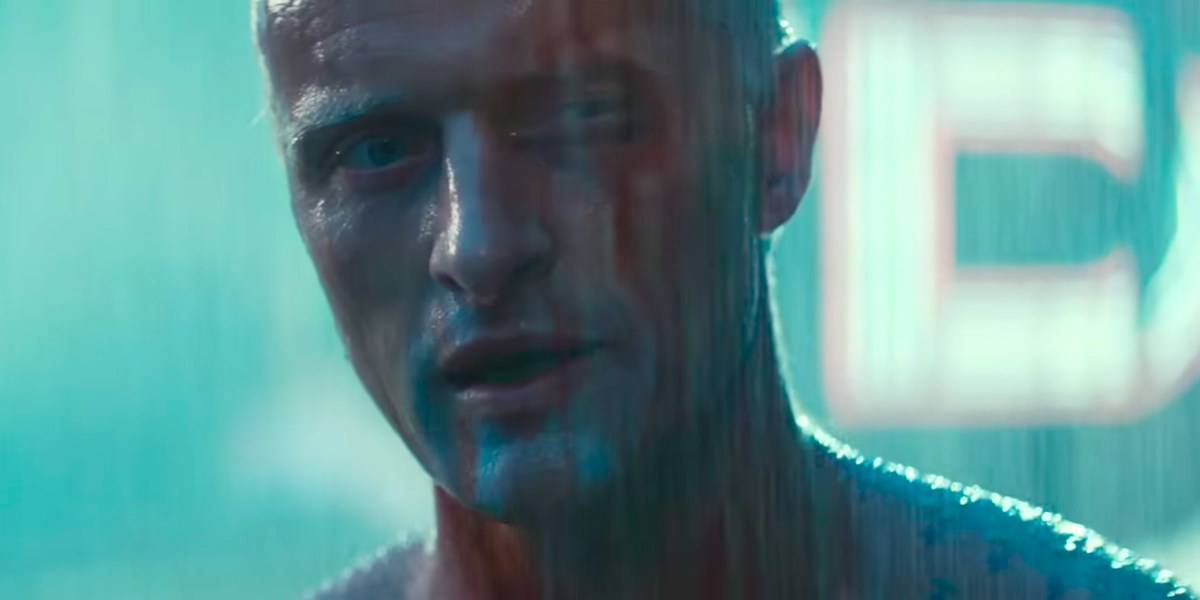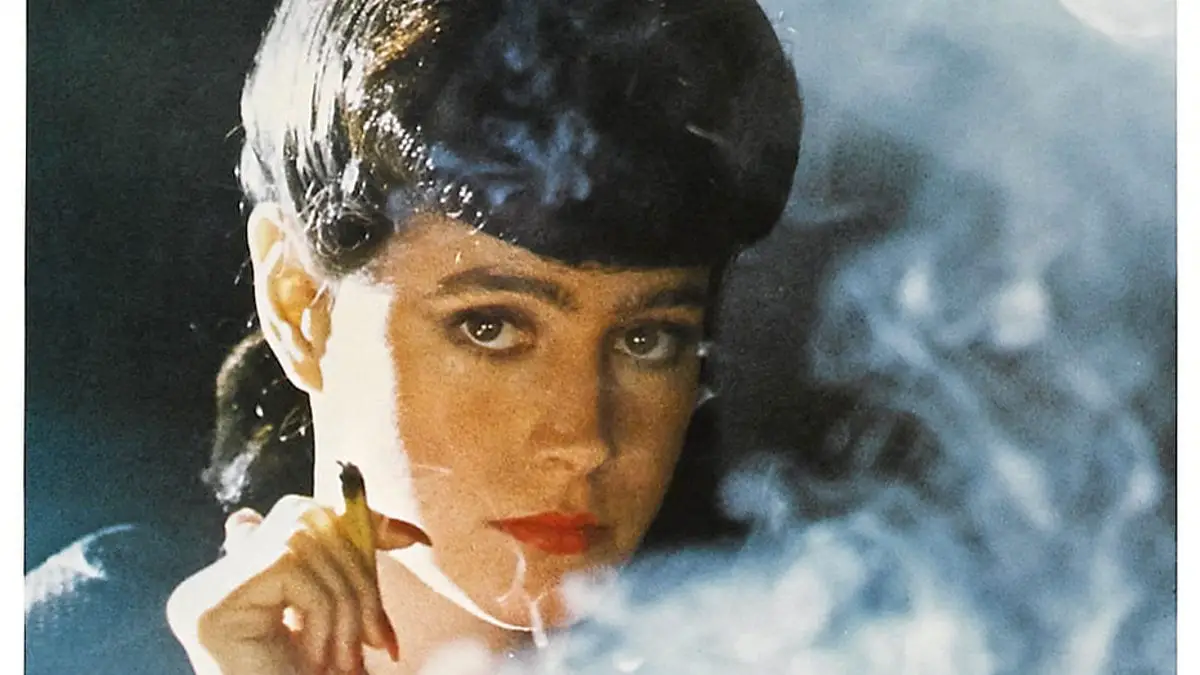The consensus is not static. In 1916, the film Birth of a Nation was critically praised and was hugely influential in developing the language of cinema, through its use of close-ups and large-scale battle sequences. It was also based on a novel by a white supremacist, deeply racist, and inspired the reformation of the Ku Klux Klan. When Spike Lee protested having to study this film at NYU in the 1970s, his tutors tried to kick him off the course for daring to question the “genius” of D. W. Griffith. Nowadays, Birth is rightly treated as a museum piece and a footnote to cinematic history, the only people who would have the film on their must-watch list probably own a MAGA hat or two. It’s an extreme example of how we shouldn’t be too precious over films that are classics, no matter what their status is.
Blade Runner isn’t anywhere near as toxic as Birth but has been subject to a recent critical reappraisal for its depiction of ethnic minorities and female characters. Whereas Birth perverted American history, Blade Runner told of a future dystopian 2019 Los Angeles predominantly populated by the Japanese, with the white population living off-world or in positions of power. Very few critics take issue with its influence on Science Fiction or the quality of the filmmaking. What these reappraisals are asking is whether its classic status should have a few caveats.
I agree with these caveats, however, I also agree with some defenses of the film too. This isn’t just me being indecisive—although every time I finish watching the film, I seem to have a different opinion. Blade Runner is open to a wide range of interpretations because of the extensive rewrites and last-minute changes made during filming and post-production.
For all the darkness in Blade Runner, its intentions are, for the most part, good. However, for a film that grapples with all the philosophical conundrums of life itself, it too often does it on other people’s behalf, rather than give each group a voice.
Did You Ever Take That Test On Yourself?
To understand Blade Runner, you have to first decide where you stand on Deckard. Is he human or Replicant?
As recounted in Paul M. Sammon’s comprehensive record on the filming of Blade Runner, Future Noir, the idea of Deckard being a Replicant began as a misunderstanding between Ridley Scott and the two screenwriters Hampton Fancher and David Peoples. Both writers had come up with endings that metaphysically highlighted the similarities between Deckard and the Replicants. Fancher’s last shot would have Deckard cramping up his hand like Batty, while People’s had a voice-over where Deckard contemplates whether he is any different to a combat model Replicant. Scott took these metaphysical illusions to be literal and ran with it.
Happy accidents kept happening during filming. In a recent interview, Katherine Haber recalls how when Deckard walks behind Rachael in the bathroom scene, the light effect used to show characters are Replicants accidentally caught his eye. This potential continuity error was left in to set up a number of hints to the viewer of Deckard’s true nature. Harrison Ford has always disagreed with this interpretation as he thinks it undermines Deckard’s character’s arc. Ultimately, the film is Ridley Scott’s baby, and when he shot the unicorn dream sequence after filming had finished, that continuity error became canon.
In the film, Blade Runners use a Voight-Kampff test: a series of cross-referenced questions and an eye examination to determine whether someone is human or a Replicant. During the opening landscape shots of 2019 Los Angeles, the film suddenly cuts to an extreme close-up of an eye, making the audience feel they are being interrogated and also inviting us to see the film as a test of Deckard. How much an audience sympathises with Deckard may depend on whether they believe he is a hunter learning how it feels to be the prey, or a Replicant in denial of his true nature.
It is on record that the makers of Blade Runner never intended for Deckard to be the alpha male hero. Director Ridley Scott, in an interview for Sammon’s book, describes the film as “an inversion of Hollywood values” and Deckard as an “antihero, an almost soulless man who didn’t give a shit whether he shot these artificial humans in the front or shot them in the back. He’s simply there to do the job.” Screenwriter Hampton Fancher also said what attracted him to the character of Deckard, in adapting the source novel, was that he “was so whipped. There was something kind of impotent about him”. Film Noir, of course, has a long history of unreliable, dodgy lead protagonists of which Deckard fits like a trench coat.

However, the old battle between art and commerce means that initially, their vision was compromised. Although the Deckard that exists in Ridley’s The Final Cut from 2007 is definitively an anti-hero, earlier edits and scripts gave him a send-off worthy of a hero. The original shooting script had a “happy ending” where Deckard and Rachael drive off into the sunset with narration revealing that Rachael, unlike other Replicants, had no termination date. The scene was not originally filmed due to budgetary reasons, with Scott deciding it was more appropriate to end the film with the lift doors closing. However, after two poorly received test screenings, the original ending was shot in haste and cobbled together with some unused footage from the opening to The Shining.
Other edits of this scene also feature Rachael asking Deckard if they are lovers, and saying that this is the “best day of my life.” Either way, this “happy ending” means Deckard has escaped, whilst in The Final Cut, the burbling Vangelis score and overdub of Gaff’s dialogue make it clear that ominous forces are still coming to stop them. In The Final Cut, Deckard is still yet to earn his redemption.
Whether human or Replicant, Deckard has all the traits of someone about to go Travis Bickle on everyone. A white, male outcast in a city where the Japanese male is the target market for advertising. His status is so low that the chef at the Noodle Bar doesn’t respect him enough to give him his full order. He doesn’t speak Cityspeak (a mixture of Japanese, Spanish, French, German, Hungarian, and English) and can only win battles with guns rather than his fists. Gazing up at the blimps offering trips off-world, Deckard is a character about to blow. The question is, who will be his victim?
Is That Why You Are Still On Earth?
As great as the film is, it has a problem which no re-edits can fix. It’s a product of its time, insomuch that the chances of ‘80s Hollywood bankrolling a big-budget film like Blade Runner with an ethnically diverse cast was slim. Things have only changed recently, something Ridley Scott didn’t realise when he cast white actors in most of the main roles in his 2014 film Exodus: Gods and Kings.
Nevertheless, to modern eyes, concentrating on white characters in an ethnically diverse society seems perverse. The film trades on the exotic nature of Japanese culture for Western audiences to create a sense of ‘Otherness,’ a feeling compounded by the fact there are no substantial parts for actors of Japanese heritage apart from glorified walk-on roles. The only main non-white character is Gaff, a Huggy Bear-type informant, who walks between the two worlds, speaking Cityspeak and leaving origami models everywhere as a meta-commentary on the story. White characters appear to be dominant, being off-world or in positions of power. The Replicants are also white, reminding myself of the old cliché: God created man in his own image.

On the flip side, the film has some level of self-awareness. The more you rewatch the film, Gaff is less a lackey but the most important character in the narrative: aware of Deckard’s true identity and willing to let him and Rachael run, slyly manipulating events from the side. Also, Los Angeles is a dystopia: it’s dark, it’s polluted, real animals are a commodity, fossil fuels burn next to apartment buildings, and the ruling class lives off-world because they have made a shithole out of this one. Hardly a ringing endorsement for white supremacy.
Although the film undoubtedly trades somewhat on the ‘Otherness’ of Japanese culture, it doesn’t demonise them; it’s a major flaw that it only engages with on a superficial level. It doesn’t question the stereotypes it uses, the same way that it affords the mainly white cast.
You’ve Done a Man’s Job, Sir
The society Blade Runner depicts is patriarchal. The anti-female sentiment is set early in the film’s opening interrogation: Leon shoots Holden when he asks how he feels about his mother, as artificial beings are notably touchy about the matter of their creation. This is a society where the mother figure has been replaced by Tyrell and his artificial creations; motherhood is only remembered fondly in photographs carried around by Rachael and Deckard. All of the main female characters are Replicants, who take roles that make them submissive to men: Rachael is Tyrell’s assistant, Zhora is an exotic dancer, and Pris an ex-sex worker.
Deckard only kills two people in the whole film: two female Replicants. Out of context, Deckard could be seen as a defender of the male patriarchy, however, sympathy and condoning don’t necessarily go hand-in-hand. Deckard succeeds by accidental or cowardly means: Zhora only fails to strangle Deckard because she is interrupted by other nightclub acts coming into her changing room. She is then later shot in the back as she runs away, while Pris engages in physical combat by somersaulting towards Deckard but is shot mid-cartwheel. Deckard does show remorse after both deaths, which in turn leaves him vulnerable to attack. Ironically, he only survives both attacks because a Replicant saves him: Rachael by shooting Leon in the head, and Batty by showing mercy. If Deckard is supposed to be a defender of the male patriarchy, it’s as much by dumb luck as anything.
The Tyrell Corporation’s motto is “More Human than Human,” and Batty is the best example of that. Whereas Deckard does little detecting, Batty has to strategise how to get to Tyrell. He is openly emotional, grieving for the friends he has lost, and bisexual; sticking his tongue in both men and women. He symbolically reinstates the natural order by killing Tyrell, giving reproduction rights back to women. Yet this comes at a cost. Like Pris, the more he manipulates or kills people, the more animalistic he becomes: stripping down his clothes and howling like a wolf during the final chase scene. The important distinction is that Batty and Pris lose their humanity to succeed in their mission while Deckard has very little humanity to lose.

Batty’s off-screen murder of repressed man-child J.F. Sebastian shows his ruthlessness. Sebastian, however, isn’t the innocent he initially appears to be. A genetic designer who makes robot friends—he seems like a victim, however, he only takes Pris in because he fancies her. He isn’t nice for nothing. He expects something back. He is visibly awkward with any intimacy: when Pris and Batty share a prolonged kiss, he moves away from the table. He holds logic above all else: smirking in the background as Tyrell tries to beat Batty with scientific fact. He is the equivalent of the man-child who still lives in his mother’s house with his nerdy obsession, trolling people on the internet and refusing to grow up. Had he been a woman in this society he wouldn’t have been so indulged.
Although earlier cuts were more ambiguous about Deckard’s nature, The Final Cut‘s insertion of the unicorn dream means that Deckard is clearly a Replicant. Gaff leaves an origami unicorn for Deckard in his apartment to both warn him of danger and show that he knows Deckard’s secret thoughts. When Gaff turns to Deckard toward the end of the film to say you have done a “man’s job,” it can be read as both an indictment of men in general, and a hint that, perhaps, he isn’t cut out for this work?
Say “Kiss Me”
The most controversial scene is Deckard and Rachael’s “love scene,” as it’s hard to gauge the intention. Is it a straight forward sex scene that dates the film because it’s an outdated view of consent and what women want? Is it a deliberate inversion of those sexual politics, deliberately taking these values to their shocking conclusion? Is it supposed to make Deckard look like the villain? Or is it a bad taste joke with Rachael as the punchline?
In the early stages, Rachael does show a sexual interest in Deckard, watching him topless in the bathroom as he washes blood out of his mouth, or pretending not to see him stumble around drunkenly. However, to get to this point, she has been psychologically manipulated by Deckard, giving her mixed messages. It begins during the Voight-Kampff test as he must hide his realisation that she is a Replicant. He does it again after revealing to her that she has implanted memories, which he tries to unconvincingly back-track on when she becomes upset: his words sound compassionate, but his face shows he couldn’t care less. When she asks whether he knows how long she will live, he tries to fob her off by lying that the files are confidential, which Rachael sees through. She is made to feel on edge with him the whole time, and because she is a Replicant on the run, she has no choice but to put up with him.
Sitting at the piano, he starts to kiss her neck. She flinches and walks away, with Deckard reaching out for her as she leaves. After this, the manipulation becomes physical: he slams the door shut, grabs her by the arms, and throws her against the wall. He then orders her to repeat “kiss me” and “I want you” until she submits. She then, without prompting, says, “put your hands on me,” and the embrace becomes more physical. Whatever the context, the scene is definitely disturbing.
Amongst fans, it is speculated the violent nature of this scene is due to the real-life dislike between Harrison Ford and Sean Young. This is partly true. In her interview in Future Noir, Sean describes herself as “emotionally abused” on set and was upset during and following this scene. After this film, she got a reputation for being ‘difficult,’ a phrase in post Me-too times it’s hard not to wince at, given that it is often used to discredit women. Whatever her reputation, it is true that she was isolated from other crew members and had a difficult relationship with Harrison. Although it is worth mentioning that there was a lot of ill-feeling from the set. Ridley Scott is on record that he was inexperienced at dealing with actors and an American crew, describing himself as ”a screamer” on set. There was also a tense relationship between Ridley and his main star. In Future Noir, Harrison says he felt undirected by Ridley and that Sean was more guided by the director then she actually was. Whatever the truth, there was no chemistry between Harrison or Sean during the filming of this “love scene,” so Ridley decided to make it more violent.

However, dialogue-wise, the scene was filmed as written. In Future Noir, Hampton recalls how he was asked to write a love scene, which he was reluctant to do, so he mocked a romantic scene with the film’s producer to intentionally embarrass him. He then got home, had a rethink, and wrote down his improvised dialogue. The scene initially went on longer and would have become more erotic, something, frankly, that would be harder to stomach if it had made it to the final edit.
The score playing underneath is called “Love Theme.” For most of the scene, it’s steamy ‘80’s saxophone, but it does cut away to Psycho-Esque shrill-strings when Deckard is rough-handling Rachael. The strings add a palpable menace to the scene as if he is going to kill her. But when he kisses her lips, the sax returns. Some irony was clearly intended in this reprise. What’s up for debate is whether the film is aware that it makes Rachael the butt of a bad joke?
In comparison to Zhora and Pris, Rachael is a passive victim. She has some agency, shooting Leon in the head, but otherwise, her life is dictated by men, from Tyrell, her creator, to Deckard. By submitting to Deckard’s will, she is accepting the unjust circumstances she lives in. Her repeating of Deckard’s words is not only born out of a fear of violence but an acknowledgment that her circumstances give her few other options: Deckard has the legal right to kill her. After this scene, the film essentially forgets about her until the end, as she waits for Deckard to return. Her character arc is unsatisfying, unlike her first scene where she is witty and formidable. By the end, she is waiting dutifully on her man—the strident Femme Fatale has been broken.
Her implanted memories from Tyrell’s niece set her up to be a victim. One suggests some element of sexual abuse in the niece’s past: her brother shows her his penis while playing doctors and nurses, which she runs from. Another involves watching baby spiders eating their mother outside her bedroom window, implying that the act and result of procreation is deadly for the female, a theme born out by Rachael’s fate in the film’s sequel. Her uncomfortableness with sex all summed up in the classic line: “Is this testing whether I’m a Replicant or a lesbian, Mr. Deckard?”.
Why does Deckard act like this? He knows the memories implanted in her head, so is he forcing himself on her because he thinks she doesn’t know her own mind, or because he knows that she can be easily manipulated? Disinterested, he cuts her off before she can give a reason to “I can’t rely on my…” Whatever the reason, it is unpalatable to watch. Forcing yourself on a woman to help them comes back to the misogynist idea of women being non-sexual beings. If the film is a Voight-Kampff test of Deckard, he fails it here. When considered in the context of the original “happy ending,” it would be legitimate to interpret the film as justifying that behaviour.
If Deckard isn’t the hero of Blade Runner, then the scene could be the proof. However, Deckard doesn’t earn his redemption as much as he is given it to him by Batty, so technically, his treatment of Rachael has no negative repercussions. In comparison, Rachael has her agency manipulated by Tyrell and Deckard. Her sense of self is built on traumatic memories to make her passive and wary of her sexuality. Whether Deckard is a hero or villain, Rachael is always the victim. Some of that discomfort I see watching the scene is deliberate, but by concentrating on the extremes of masculinity, the film forgets to address what it feels like to be on the other side of that.
Tears in Rain
Technically, there is a lot in Blade Runner for audiences to enjoy: the plot is a roller coaster of unexpected twists and turns, and the special effects still look outstanding. However, as consensus changes, audiences may now question why in a film where the Replicants are symbolic of any oppressed people, does it sideline women and ethnic groups? The film is, to a certain extent, aware of this as the more you watch it, the more you realise the power dynamics are inverted: Gaff, rather then a lackey, has a secret agenda, Batty is the actual hero who restores a type of equality at the end, and Deckard hates his own kind. However, the casual viewer may be forgiven for seeing the film as justifying Deckard’s misogyny.
The “love scene” is a black joke on many levels, from the music to the script. It tests the viewer to see how far are you likely to sympathise with Deckard. The film almost invites negative responses in this scene, so any reasonable reading of it is justified. But whatever point you think the scene tries to make, the result is the same: it robs Rachael of her agency and, most importantly, the film never gives it back to her.
None of this means Blade Runner should be treated as a museum piece of a bygone time. The film invites these analyses because of the quality of the filmmaking. Film history is full of films like Birth of a Nation, with nasty undercurrents; the most infamous one is Gone with the Wind, a film that disappeared from HBO Max earlier this year but returned with an intro to provide context. The difficult and ever-changing production of Blade Runner would be hard to contextualise so simply, or frame with one set of ideas; its flaws probably would apply to most films of its era. This is why these intelligent critiques should be applauded, not shot down by people using phrases like ‘Social Justice Warrior’ or ‘Snowflakes.’ Truly great films provide varied responses and, as long as it stirs debate, Blade Runner won’t die.





Matt might not have caught a few errors, but that’s ok. Deckard is a retired cop from the “Blade Runner” division. His former partner is shot by Leon at the beginning. Gaff IS a cop, just not Replicant Crimes Division. Deckard knows Cityspeak, but acts like he doesn’t – it’s a cop trick. The Replicants are all part of an “off world kill squad”, even the women. In the Phillip K. Dick novel, Deckard IS a Replicant, but doesn’t know it – yet. Director Scott wanted to keep viewers guessing.
BR is a homage’ to the hard-boiled detective genre and a classic SF masterpiece, not Ridley Scott’s soapbox. It’s a dirty, ugly, morally questionable dystopia, as intended.